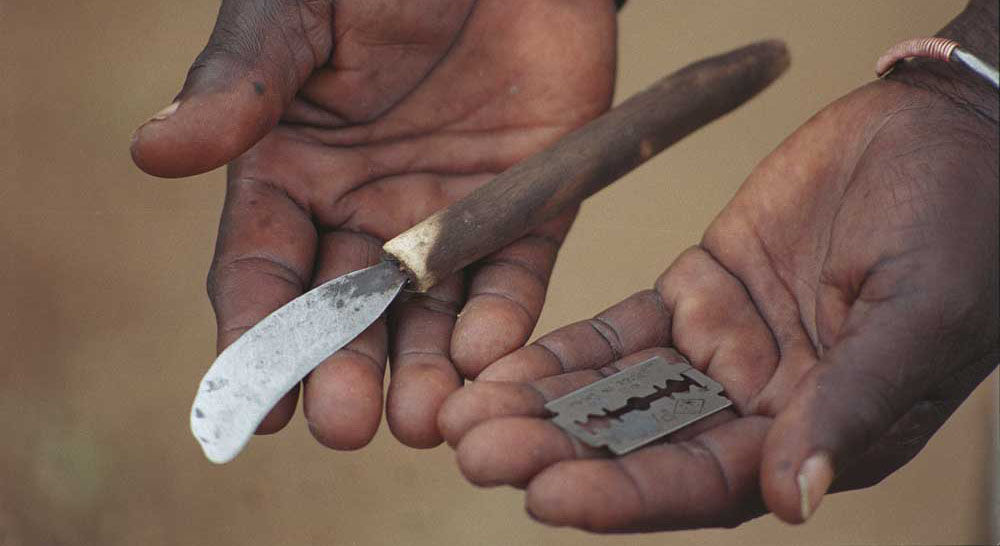200 Million Survivors: The Urgent Race to End FGM by 2030
- February 6, 2025
- Posted by: Hub Admin
- Categories: Article, Human Rights

International Day of Zero Tolerance for Female Genital Mutilation 2025
By Tine Bello
The Urgent Call for Action
Millions of girls are being robbed of their integrity, childhoods, health, education, and aspirations every day by harmful practices such as Female Genital Mutilation (FGM). As of 2025, the fight to completely eradicate FGM is far from over. With only five years remaining to meet the 2030 Sustainable Development Goal (SDG) 5 target of eliminating harmful practices like FGM, progress must accelerate at 27 times the current pace. This year’s theme, “Step up the Pace,” underscores the critical need for swift, decisive action to protect girls and women worldwide from this grave violation of their human rights.
Understanding FGM
The global observance of the International Day of Zero Tolerance for FGM stands as both a powerful declaration of solidarity and an urgent call to action. FGM, as defined by the World Health Organization (WHO), encompasses all procedures that involve altering or causing injury to the female genitalia for non-medical reasons. It is internationally recognized as a severe violation of the human rights, health, and bodily integrity of girls and women. The WHO categorizes FGM into four types: clitoridectomy, which involves the partial or total removal of the clitoral glans; excision, which includes the partial or total removal of the clitoral glans and the labia minora; infibulation, which entails narrowing the vaginal opening through the creation of a covering seal; and lastly, all other harmful procedures carried out for non-medical purposes, such as pricking, piercing, scraping, and cauterizing the genital area.
Despite global condemnation, FGM remains widespread, with over 200 million girls and women alive today having undergone the procedure, and an additional 4.4 million girls at risk in 2025 alone, equating to more than 12,000 girls each day. Although FGM is primarily concentrated in over 30 countries across Africa and the Middle East, it is a global issue, persisting in parts of Asia, Latin America, and within immigrant communities in Western Europe, North America, Australia, and New Zealand.

Nigeria’s FGM Landscape
Nigeria holds the third-highest number of FGM survivors globally, with approximately 19.9 million women and girls having experienced this harmful practice. According to the 2018 Nigeria Demographic and Health Survey (NDHS), the prevalence of FGM among women aged 15–49 declined from 25% in 2013 to 20%, indicating progress. However, the prevalence among girls aged 0–14 increased from 16.9% to 19.2%, signaling ongoing challenges in curbing the practice among younger generations. FGM is most prevalent in Nigeria’s Southwest, Southeast, and South-South regions, particularly in states like Osun (76.3%), Ekiti (72.3%), Oyo (66.9%), Imo (61.7%), Ebonyi (53.2%), Edo (35.5%), and Delta (33.1%) In contrast, northern states like Kano and Katsina report prevalence rates as low as 1%, due in part to differing cultural and religious beliefs.
Drivers and Consequences
The persistence of FGM in Nigeria is fueled by a complex interplay of cultural traditions, social norms, religious misconceptions, and patriarchal beliefs that seek to control female sexuality, promote chastity, and enhance marriageability. The consequences of FGM are devastating and lifelong. Girls and women who undergo FGM face immediate health risks such as severe pain, excessive bleeding, infections, shock, and difficulty in urination, as well as long-term complications including chronic infections, menstrual problems, sexual dysfunction, infertility, complications during childbirth, and profound psychological trauma such as depression, anxiety, and post-traumatic stress disorder (PTSD). Beyond the physical and emotional toll, FGM also imposes significant economic burdens on healthcare systems and families.
Progress and Legal Framework
Despite these grim realities, remarkable strides have been made in the fight against FGM. Nigeria’s Violence Against Persons (Prohibition) Act (VAPP), enacted in 2015, criminalises FGM nationwide, although enforcement varies across states. Global partnerships, such as the UNFPA-UNICEF Joint Programme, have played a pivotal role in accelerating progress by supporting community-driven initiatives, engaging traditional and religious leaders, and amplifying the voices of survivors. This partnership has reached over seven million girls and women with prevention and care services, inspired more than 50 million public declarations to abandon FGM, and mobilised grassroots organisations and community leaders to challenge harmful gender norms.
Way Forward
To end FGM, coordinated and intensified efforts are essential. This requires engaging entire communities, including men and boys, traditional leaders, religious institutions, educators, and policymakers. It involves investing in comprehensive sexual education, promoting gender equality, strengthening legal frameworks, and providing holistic support for survivors encompassing healthcare, psychological services, and opportunities for education and economic empowerment. Most importantly, it demands that we listen to survivors, honour their experiences, and support their leadership in the fight against FGM.
Ending FGM is not just about stopping a harmful practice; it’s about dismantling the patriarchal structures that perpetuate gender inequality, reclaiming the autonomy of girls and women, and ensuring that every girl is born into a world where her body is honoured, her voice is heard, her choices are respected, and her future is her own.
On this International Day of Zero Tolerance for FGM, let us reaffirm our collective commitment to “Step up the Pace.” The time to act is now because every moment we delay, more girls are at risk. Together, we can accelerate change, protect futures, and create a world free from FGM.
